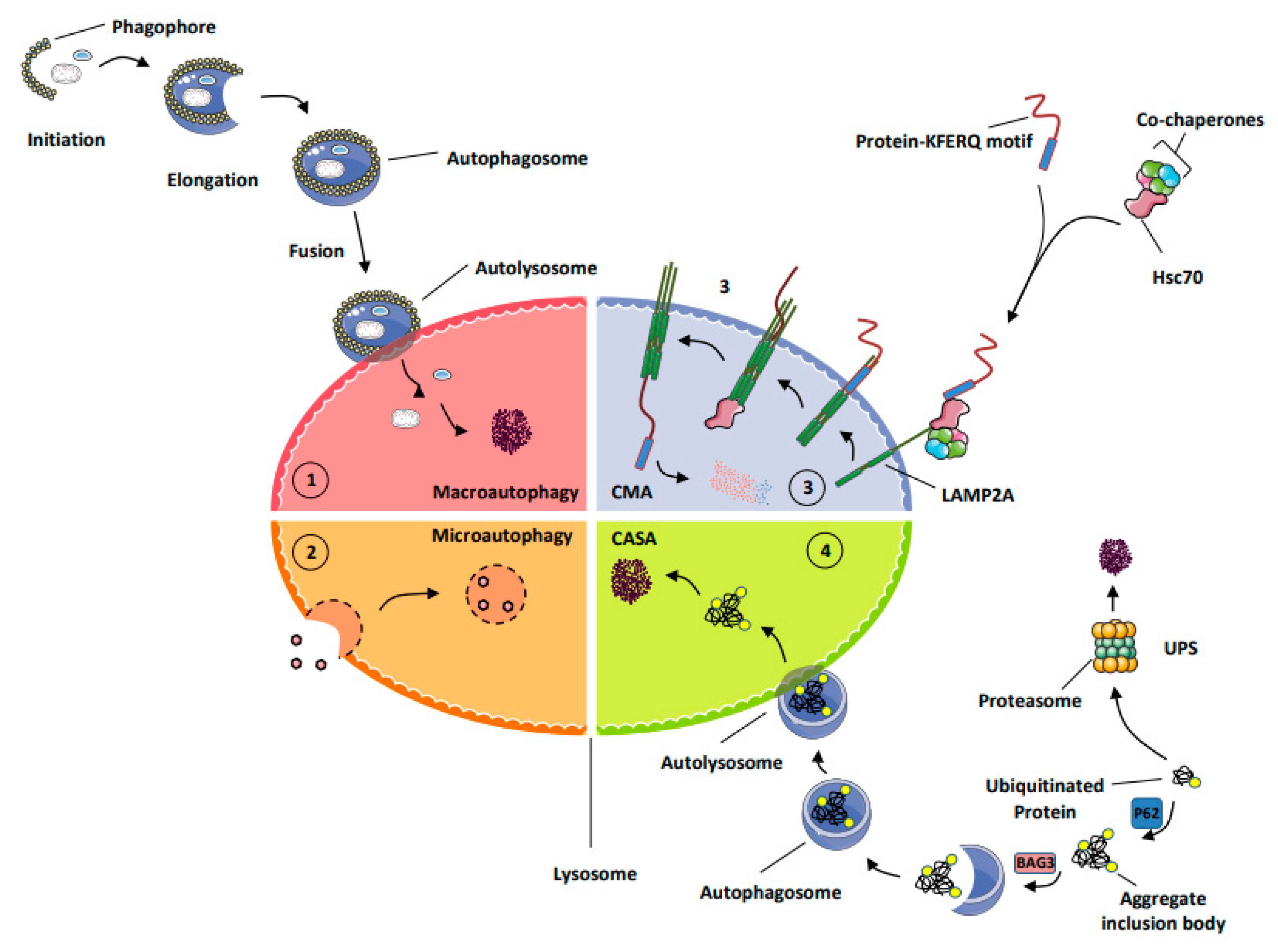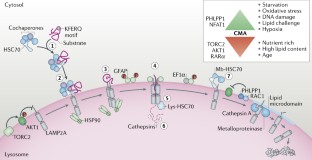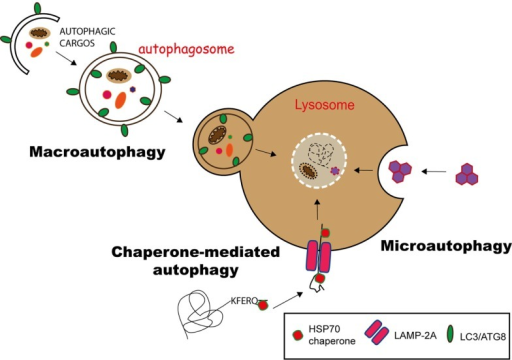

Additionally in immunity, autophagy may serve as a defense mechanism to allow the sequestration and packaging of viruses. Elimination of macromolecules and organelles enables autophagy to be a form of cellular quality control such intracellular clearance may effectively rid the cytoplasm of surplus or hurtful proteins, organelles, bacteria, and/or pathogens. Utilization and recycling of degraded products gives autophagy many important physiological roles, not just as a survival response to starvation and hypoxia, but also in gluconeogenesis energy production, protein synthesis, and nutrient mobilization in development.


These chaperones and proteins form complexes, then the chaperone unwinds and is pulled across the lysosomal membrane where it undergoes degradation inside the lumen. In chaperone-mediated autophagy, a chaperone complex in the cytosol identifies target proteins in the lysosome or vacuole, and pulls them to the surface of the organelle. Microautophagy is lesser known, and unlike the other two processes it is mediated by direct engulfment of the cytoplasmic cargo, where material in the lysosome or vacuole is trapped by random membrane invagination. This body then directly degrades or recycles the cargo it now holds via hydrolases. The most well-studied in mammals is macroautophagy, where an autophagosome fuses with a lysosome or vacuole in the cytoplasm, and gathers the cellular components in what is known as an autophagic body.


 0 kommentar(er)
0 kommentar(er)
